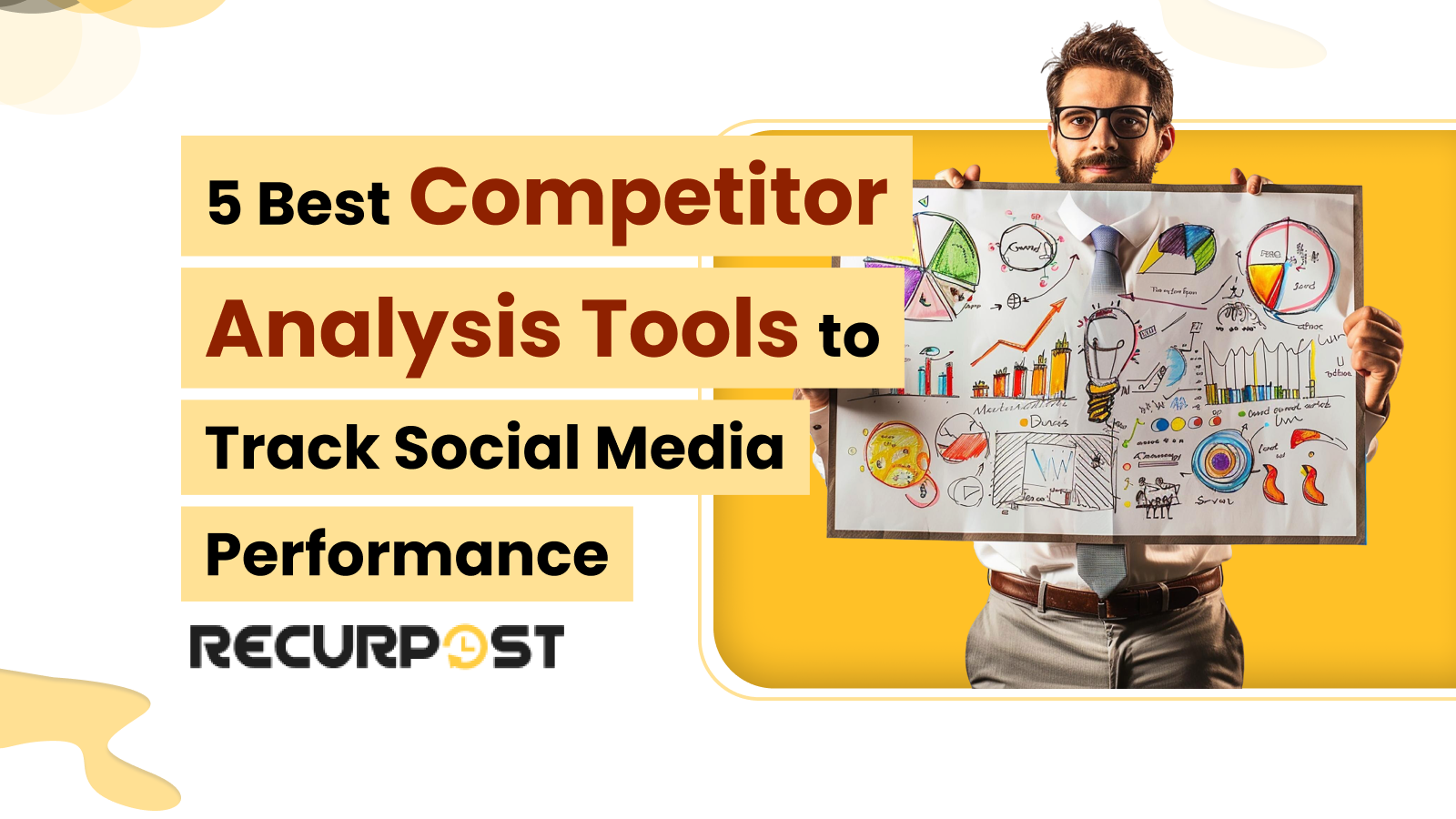For digital marketers and agencies managing social media, staying ahead requires using competitor analysis tools that track rival brands, monitor social media activity, and measure engagement rates.
The right competitor analysis tool helps with benchmarking, tracking content strategy, and uncovering competitive insights. Many leading tools deliver real-time competitor data, audience demographics, and keyword rankings to support data-driven decisions.
Choosing the best competitor analysis tool means comparing features for social media monitoring, campaign tracking, and content research. Top competitor tracking tools support detailed competitor research, provide access to competitor data, and allow you to review traffic sources and engagement metrics for direct and indirect competitors.
This guide reviews the 5 best competitor analysis tools trusted by marketers for social media performance and competitive research. Each tool goes beyond basic tracking by revealing content gaps, top-performing content, and actionable competitor insights you can use to adjust campaigns and grow results.
Key Features of Analysis Tools
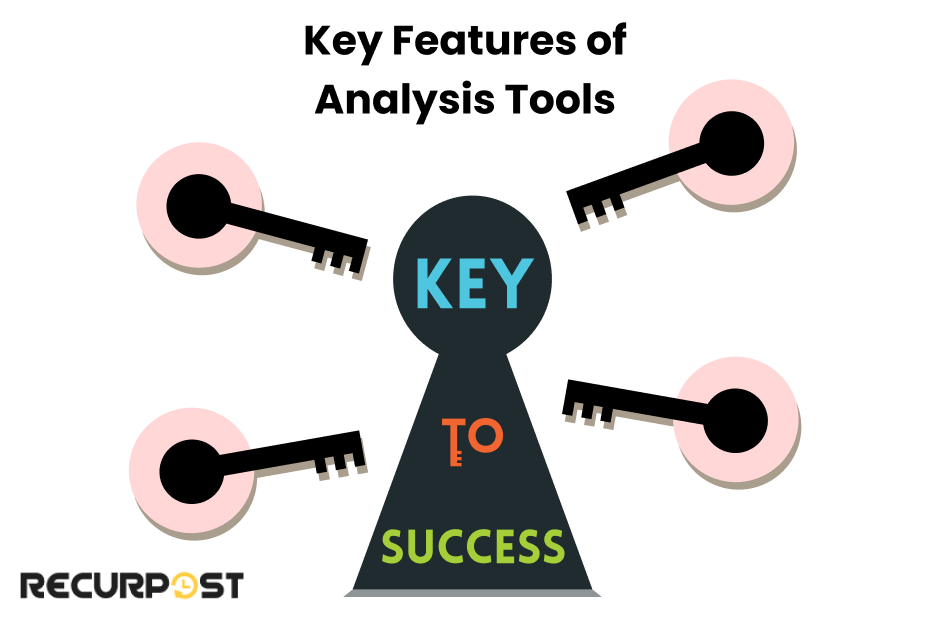
Competitor Analysis Tools offer a wide range of features that give marketers valuable insights for business growth. The top competitor analysis tools support detailed competitor profiling, benchmarking, and direct comparisons with both direct and indirect competitors. You get access to competitor data through key metrics, visual dashboards, and side-by-side analysis of multiple brands.
Market research functions help spot trends, track market segments, and reveal content gaps. Leading competitive analysis tools highlight customer preferences, audience demographics, and new opportunities for content marketing or campaign planning. SEO competitor analysis options let you track keyword rankings, keyword gaps, and backlink data, making it easy to refine your content and website strategy using competitor research.
Social media monitoring lets you track competitor domains, monitor social media activity, and analyze engagement metrics. PPC competitor analysis tools review competitors’ paid campaigns, ad copy, landing pages, and estimated ad spend on Google Ads or social media ads. This information helps you spot keyword gaps, test new strategies, and improve your own PPC performance in the market.
The best competitor analysis tools also offer email marketing analysis, sentiment analysis, traffic analysis, and data visualization. With these features, you get a clear picture of your competition and can use data-driven decisions to grow your marketing efforts.
5 Best Competitor Analysis Tools for Social Media Success

Achieving social media success means using competitor analysis tools to track what competitors are doing, spot winning strategies, and discover content ideas. A reliable competitor analysis tool helps digital marketers, agencies, and social media managers monitor direct competitors, analyze social media activity, and review competitor data for better content planning.
Below are five of the best competitor analysis tools trusted by marketing teams to reveal competitor insights, benchmark performance, and adjust social media campaigns. Each tool provides competitor tracking, audience demographics, keyword rankings, and valuable engagement metrics to help you improve results.
1. Sociality.io
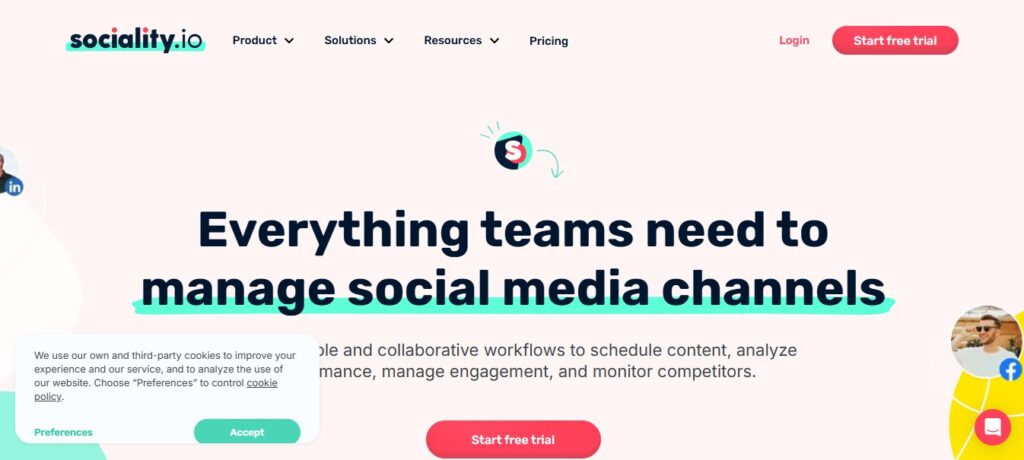
Sociality.io stands out as an all-in-one solution among competitor analysis tools for both website and social media performance. This platform acts as a competitor research tool, offering in-depth analysis of engagement metrics, post frequency, website traffic sources, and content ideas. You can review competitors’ website structures, SEO strategies, PPC campaigns, and audience demographics for valuable insights.
With Sociality.io, track social media activity, discover content gaps, and monitor traffic analysis to see which posts drive the most engagement. The tool highlights competitor domains, keyword rankings, and the effectiveness of content across multiple channels. Sociality.io’s approach bridges the gap between website competitor analysis and social media monitoring, giving you a clear picture of how competitors connect their campaigns.
Key features:
- Automated Reports: Receive instant access to competitor social media analytics and website traffic analysis in a single dashboard.
- Content Performance Tracking: Track top-performing content, content types, and engagement rate across platforms.
- Audience Engagement: Analyze audience demographics, frequency of posts, and engagement metrics for a detailed look at competitor success.
Why Sociality.io works: This tool reveals trends, pinpoints competitor content gaps, and uncovers traffic sources. Sociality.io is a best-in-class choice for small businesses, agencies, and email marketers who want actionable competitor insights to boost their campaigns and content strategy.
2. Socialbakers
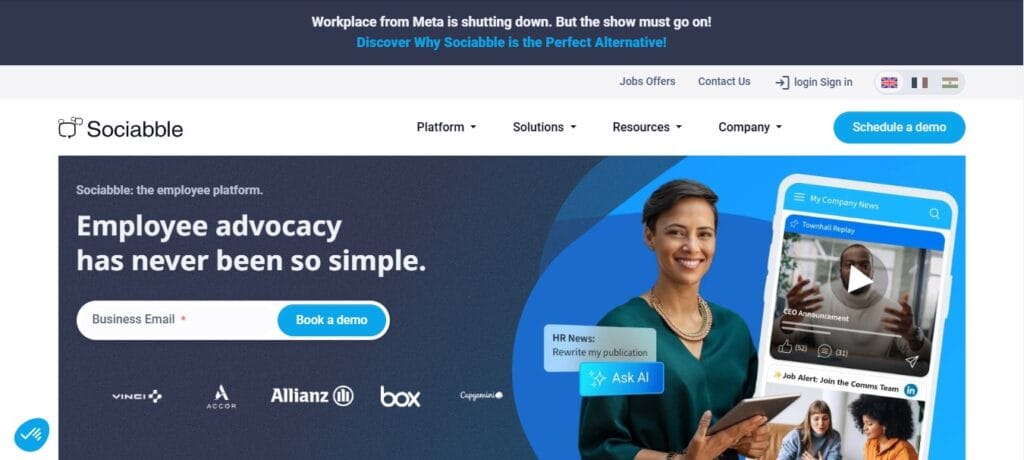
Socialbakers is a leading competitor analysis tool for social media analytics, competitive intelligence, and performance benchmarking. As a competitor research tool, Socialbakers tracks social media activity, engagement metrics, influencer partnerships, and campaign performance for both direct and indirect competitors.
This platform delivers customizable benchmarking reports, audience demographics, and campaign analytics. Businesses use Socialbakers to compare performance metrics against industry standards, monitor audience growth, and review engagement rates. You also get competitive benchmarking features to track key metrics, spot content gaps, and identify top-performing content.
Key features:
- Campaign Analytics: Review competitor campaigns, analyze traffic sources, and measure results.
- Influencer Monitoring: Track top social media influencers, see their audience reach, and evaluate how your competitors work with them.
- Audience Demographics: Uncover competitor audience insights, including location, age, interests, and engagement rate.
Why Socialbakers stands out: This competitive intelligence tool is ideal for marketers who want detailed benchmarking, influencer tracking, and actionable audience insights for social media growth. Socialbakers reveals competitor strategies and supports strong content marketing for agencies and brands.
3. Sprout Social
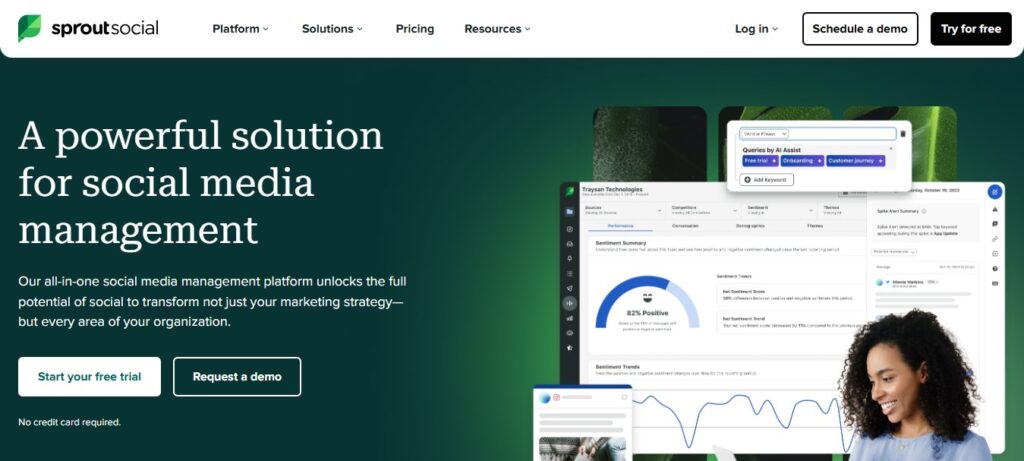
Sprout Social is one of the best competitor analysis tools for social media marketers who need detailed analytics and competitor tracking. The platform offers comprehensive social media monitoring, rank tracking, and traffic analysis across campaigns and channels. Sprout Social supports competitor benchmarking by letting you compare performance metrics, such as audience growth, engagement rate, and post frequency, against top competitors.
As a competitor research tool, Sprout Social provides audience insights, content ideas, and post scheduling features based on real competitor data. You can use its social media tracker to uncover what works for other brands, find content gaps, and review engagement metrics on each social platform.
Key features:
- Competitor Benchmarking: Compare your social media performance, follower growth, and engagement metrics to direct competitors.
- Audience Insights: Reveal audience demographics, preferences, and trends to guide campaign planning.
- Content Scheduling: Schedule your posts and campaigns based on the top-performing content from competitor research.
Why Sprout Social is effective: Sprout Social offers in-depth analytics, actionable competitor insights, and valuable tools for marketers looking to boost engagement, fill content gaps, and reach more potential customers.
4. Hootsuite
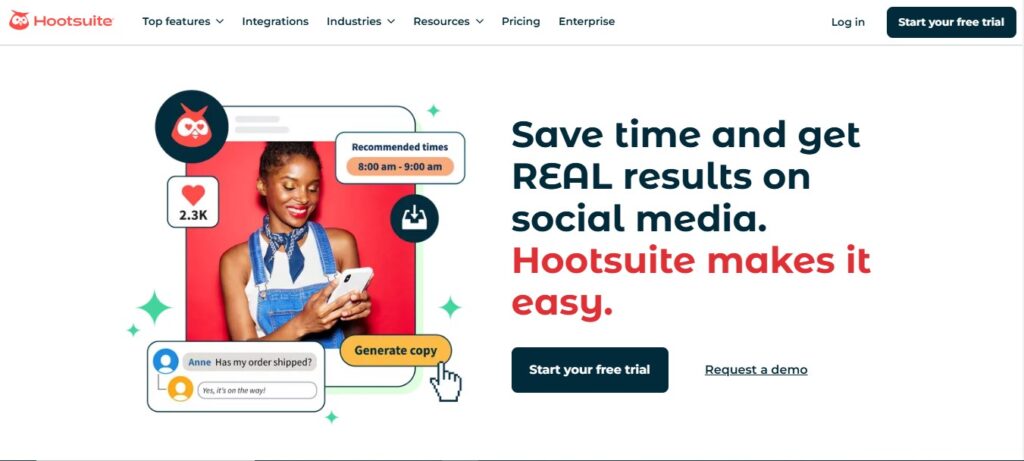
Hootsuite is a popular competitor analysis tool for social media professionals who need reliable competitor tracking, keyword research, and custom reporting. Hootsuite acts as a social media tracker, offering real-time tracking of competitor activity, post performance, and audience engagement across all major platforms. As a free competitor analysis tool, it helps you analyze website traffic, monitor competitor domains, and uncover content ideas for your next campaign.
Hootsuite’s features support comprehensive competitive research and social media monitoring. The platform tracks ranking keywords, reviews engagement metrics, and delivers insights from both direct and indirect competitors. You can use Hootsuite to run swot analysis, track keyword gaps, and compare social media strategies for multiple brands.
Curious how Hootsuite compares to other tools? Check out this detailed breakdown of Hootsuite vs PromoRepublic to see which platform better fits your social media strategy.
Key features:
- Keyword Tracking: Monitor ranking keywords and see engagement for competitor mentions.
- Custom Reports: Build custom reports and dashboards to track competitor metrics, social sentiment, post types, and audience demographics.
- Competitor Performance Tracking: Review post frequency, content types, and engagement rates compared to your own social media activity.
Why Hootsuite stands out: Hootsuite combines competitor tracking and social media management, making it easy to oversee multiple accounts, review website traffic, and uncover actionable insights for content marketing and audience growth.
5. Brandwatch
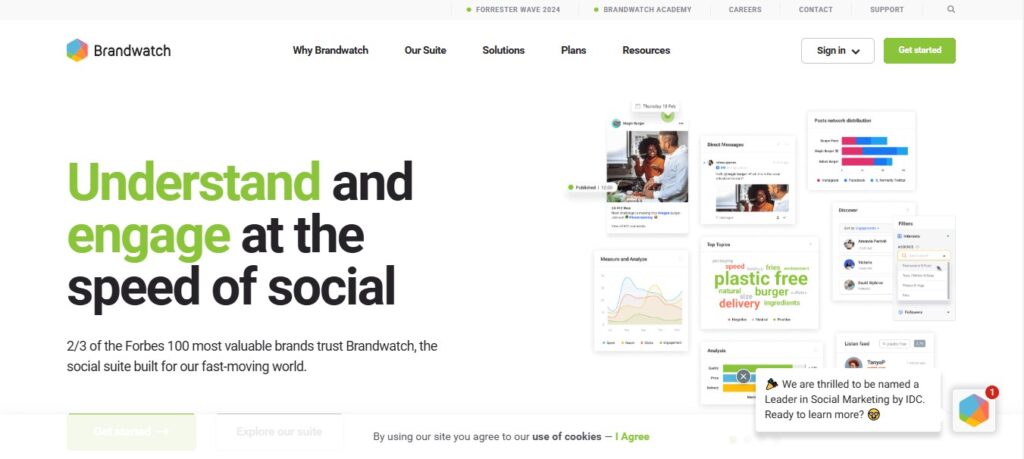
Brandwatch is a top competitor analysis tool for marketers who want competitive insights and advanced social media intelligence. This platform excels in competitor analytics, data mining, and competitive research, providing powerful analysis tools for tracking audience sentiment, market trends, and content performance. Brandwatch’s competitive intelligence features go beyond surface metrics, offering audience segmentation, paid traffic analysis, and backlink tracking for a complete overview of your competitors’ online presence.
Brandwatch transforms raw data into actionable insights by analyzing competitor mentions, tracking sentiment, and reviewing trending content. You can use Brandwatch to segment competitor audiences, uncover content ideas, and monitor campaign performance.
Key features:
- Sentiment Tracking: Review sentiment around competitor posts, brand mentions, and audience reactions in real time.
- Audience Segmentation: Analyze competitor audience demographics, purchasing behavior, and content preferences.
- Market Trends: Identify new market trends by tracking competitor content, engagement metrics, and paid traffic sources.
Why Brandwatch works: Brandwatch is ideal for digital marketers and agencies seeking in-depth competitive insights, actionable content ideas, and a clear view of the latest industry trends.
Mobile App Competitor Analysis Tools
Mobile App competitor analysis tools are essential for brands and businesses offering mobile apps. These analysis tools track app downloads, engagement metrics, keyword rankings, and app store performance for competing applications. Monitoring mobile app competitors with the right competitor analysis tool helps uncover user acquisition strategies, feature adoption, and market trends.
Top mobile app competitor analysis tools include:
1. App Annie (now data.ai)
App Annie provides in-depth mobile app competitor analysis with download analytics, app store rankings, and user engagement data. You can review keyword rankings, backlinks to app store pages, paid traffic sources, and performance metrics for direct competitors.
Key features:
- Market Data: Track download numbers, revenue estimates, and user demographics for competing apps.
- App Store Optimization: Monitor keyword research, keyword gaps, and visibility for competitor apps.
- User Engagement Metrics: Measure active users, session duration, and feature usage.
App Annie is a best-in-class competitor research tool for app developers, offering actionable insights and trend identification for the mobile app market.
2. Sensor Tower
Sensor Tower specializes in app store competitive intelligence, helping marketers analyze competitor download patterns, in-app purchase revenue, and paid user acquisition.
Key features:
- Download Tracking: Monitor download volumes, install patterns, and historical data.
- Revenue Analysis: Estimate in-app purchase and ad revenue from competitors.
- User Acquisition Insights: Review advertising campaigns, keyword performance, and engagement rates.
Sensor Tower is an excellent way for marketers and developers to gain insights into competitor success, spot new opportunities, and benchmark mobile app performance.
Choose the Right Tool for Competitor Analysis
Choosing the right competitor analysis tool ensures your business gets valuable insights for better marketing efforts. Here’s how to select the best analysis tools for your needs:
1. Define Goals and Objectives: Decide if you need SEO competitor analysis, social media monitoring, or email marketing analysis. Focus on analysis tools with key metrics, instant access to data, and features tailored to your main goals.
2. Determine Analysis Needs: Review how many direct competitors or market segments you want to monitor. Some competitive analysis tools deliver broad data-driven reports, while others offer granular, niche-specific insights.
3. Evaluate Ease of Use: Pick analysis tools with dashboards and user-friendly workflows for instant access to data. The right interface streamlines your team’s research and makes it easy to track key metrics and traffic sources.
4. Check Cost and Pricing Models: Compare features, free plans, and premium pricing. Choose a competitor analysis tool that balances features, reporting, and value.
5. Consider Customer Support and Training: Opt for analysis tools that offer onboarding, customer support, and learning resources. Good support ensures you maximize the tool’s functionality and get data-driven results fast.
How to Use Competitor Analysis Tools Effectively
Using competitor analysis tools effectively goes beyond tracking. These analysis tools deliver actionable insights for social media marketing, campaign performance, and audience engagement. With the right competitor tracking tools, you get instant access to market data, content performance tracking, and digital marketing analysis to stay ahead of your competition.
To maximize results, follow these steps:
- Focus on Key Metrics: Use a social media tracker or competitive benchmarking tool to monitor engagement rates, post frequency, content types, follower growth, and website traffic. These insights help refine your content and posting schedule.
- Spot Strengths and Weaknesses: Identify content gaps and engagement patterns with analysis tools. Take advantage of weaknesses in your competitors’ marketing efforts to expand your reach.
- Leverage Sentiment and Audience Insights: Measure audience sentiment and demographics to improve your messaging and connect with potential customers.
- Benchmark Performance: Compare your brand’s metrics against competitors using automated reports, keyword alerts, and competitive benchmarking for continuous improvement.
- Automate Tracking: Set up custom reports and real-time alerts for competitor activity, ranking keywords, and traffic sources.
- Analyze Website Performance: Use website analysis tools to track competitor traffic analysis, top pages, user behavior, and audience segments. Adjust your own site content and structure to reach similar customer segments and boost results.
Free Social Media Competitive Analysis Template
Use this template to organize key metrics, benchmark competitors, and streamline your strategy effectively.
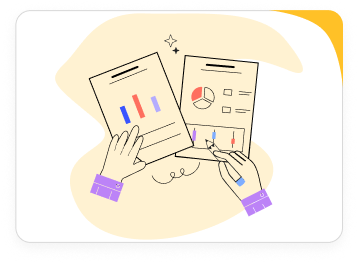
Common Mistakes to Avoid
Avoiding mistakes in competitor analysis is essential for getting accurate competitive insights and data-driven decisions. Here are common pitfalls to avoid with competitor analysis tools:
- Focusing Only on One Competitor: Limiting analysis to a single rival restricts your view and causes missed trends in the market segment.
- Ignoring Indirect Competitors: Overlooking indirect competitors or similar brands leaves content gaps and traffic sources unexplored.
- Missing Market Trends: Not monitoring industry trends or market changes leads to outdated content and weak campaign results.
- Outdated Analysis: Relying on old data or not updating your competitive benchmarking can lead to missed shifts in competitor strategies.
- Not Applying Insights: Failing to use insights from competitive research tools means you lose the advantage in content strategy and marketing efforts.
- Over-Reliance on Tools: While competitor analysis tools are powerful, combine them with manual research and customer feedback for a complete picture.
Avoid these mistakes to get valuable, actionable insights and improve your digital marketing results.
Conclusion
Using competitor tools keeps your business competitive and ready to adjust to new trends. The best competitor analysis tools deliver insights into content performance, engagement metrics, audience demographics, and market changes so you can improve your content strategy and reach potential customers.
With the right competitor analysis tools, you can track key metrics, benchmark social media performance, and review both direct and indirect competitors. Automated reporting, competitive benchmarking, and regular data reviews allow you to spot shifts early and fill content gaps before your rivals.
Start using competitor analysis tools now to gain a clear advantage, improve your social media results, and grow your brand with data-driven decisions.
Free Download Social Media Templates
FAQ on Competitor Analysis Tools
1. Are there any free competitor analysis tools available?
Yes, tools like Google Alerts, Social Blade, and Facebook Ad Library offer free competitor tracking for mentions, social stats, and ads. Other free options like SpyFu, SimilarWeb, and Ubersuggest provide basic keyword research and website traffic analysis. These free competitor analysis tools are a great starting point for brands on a budget.
2. How can I measure the ROI of competitor analysis tools?
Measure ROI by tracking improvements in engagement rates, follower growth, website traffic, and campaign results after applying competitor insights. Compare your performance before and after using competitor analysis tools to evaluate strategy effectiveness.
3. How often should I conduct competitor analysis?
Competitor analysis should be ongoing. Most brands benefit from a full review quarterly to spot market shifts and update strategies. Monthly check-ins on key metrics and traffic sources are useful, especially during active marketing campaigns.
4. What are some key metrics to track during competitor analysis?
Track engagement rates, follower growth, content types, ad spend, customer sentiment, website traffic, and content response time. These metrics provide a clear picture of competitor strategies and audience preferences.
5. Can competitor analysis tools help with SEO and keyword tracking?
6. Should I include global competitors in my analysis?
Include global competitors if you operate internationally or plan to expand. Analyzing these brands can reveal trends, threats, or winning strategies. Even for local businesses, global competitor insights can inspire innovation.
7. What are indirect competitors, and why analyze them?
Indirect competitors offer different solutions to your audience’s needs. For example, fitness apps may be indirect competitors for a yoga studio. Including indirect competitors helps you spot industry trends, new opportunities, and changing customer preferences outside your main market.
8. Are there competitor analysis tools specifically for mobile apps?
Yes. Mobile app competitor analysis tools like App Annie (data.ai), Sensor Tower, and Mobile Action track app store rankings, download statistics, user reviews, and keyword research. They help app developers and marketers understand user acquisition, market share, and monetization strategies.

Ruchi Dhimar is a skilled content writer with 5 years of experience. She is passionate about crafting compelling narratives, specializing in writing content for different industries.

